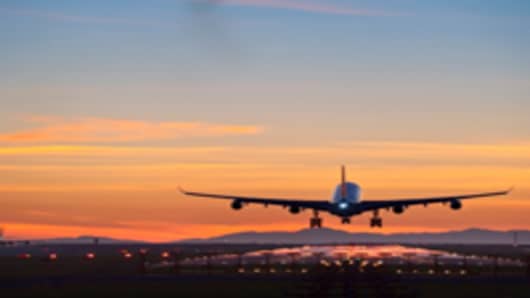India's private airlines were once seen as a bright symbol of their country's modernization, as their rapid expansion allowed unprecedented numbers of Indians to fly for the first time in their lives.
It was not long, however, before carriers' hopes of boundless growth became grounded in a fog of red ink. Intense competition for the loyalties of highly price-sensitive travelers, coupled with some of the region's highest operating costs, led to years of losses and mounting debts.
But the news that southeast Asia's largest low-cost carrier, AirAsia, is planning to launch an Indian domestic airline with one of India's most respected business houses, Tata Sons, suggests foreign airlines still see opportunity in this difficult market.
(Read More: India's TCS Shares Surge on 'Picture Perfect' Earnings)
"Indian aviation has enormous long-term growth potential and is expected to produce tremendous upside for first movers," the Malaysian-based carrier said this week, as it announced its plans in a statement to the Kuala Lumpur stock exchange.
AirAsia's founder, Tony Fernandes, said on Thursday that his carrier will initially invest between $30 million and $60 million for a 49 percent stake in the Indian venture.
His airline is the first foreign operator to enter the market since the Indian government said in September that it would to allow international carriers to own up to 49 percent of domestic airlines. And, despite the turbulent conditions in India's skies, AirAsia is unlikely to be the last.
Overseas carriers, particularly from the Gulf, are also eyeing strategic tie-ups with existing Indian carriers, to help them capture more Indian passengers for their own international networks.
"India is the only country that has the growth these airlines want," says Sharan Lillaney, an aviation industry analyst at Angel Broking in Mumbai. "They need to capture good Indian demand for their overseas services."
Etihad, the Abu Dhabi-based carrier, has been in advanced talks with Jet Airways, India's largest private carrier, about buying a stake. A deal had appeared imminent although Etihad's chairman recently said the terms needed to be revised, amid concerns about the overall investment climate in India.
Meanwhile, SpiceJet, India's third-largest private airline, has confirmed that it is in preliminary talks with several potential partners over a stake sale, though it has not identified any of its suitors.
(Read More: India's Investment Malaise Thwarting Quick Economic Rebound)
Analysts say tie-ups with Indian carriers would help Gulf carriers synchronize schedules and seamlessly connect travelers from smaller cities with their international routes – a logic that also underpins AirAsia's plans.


